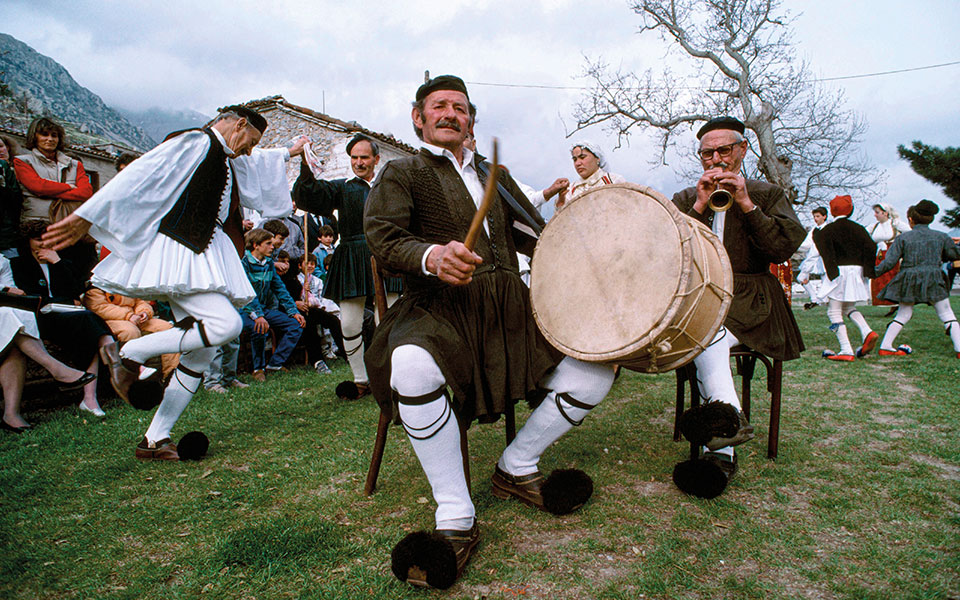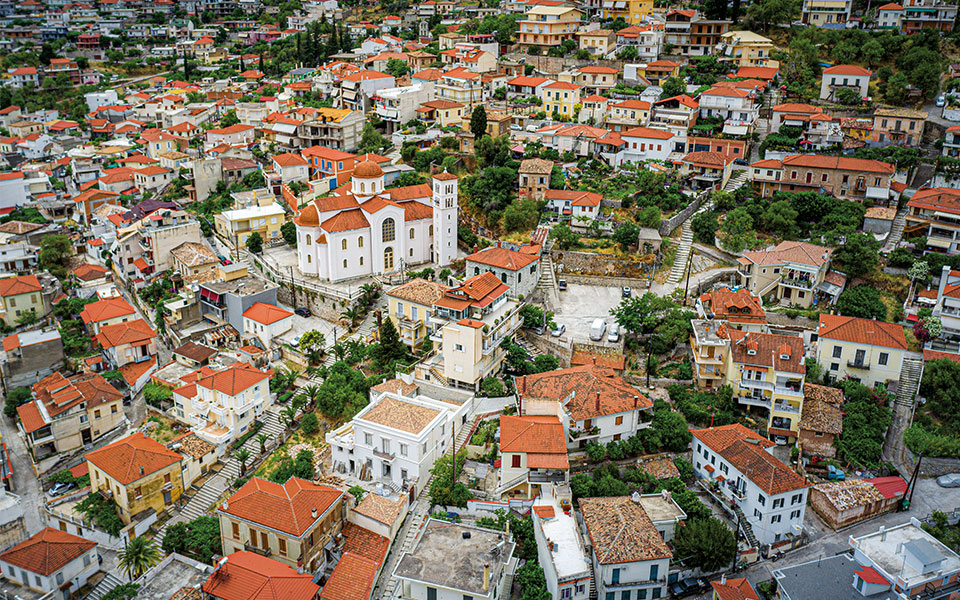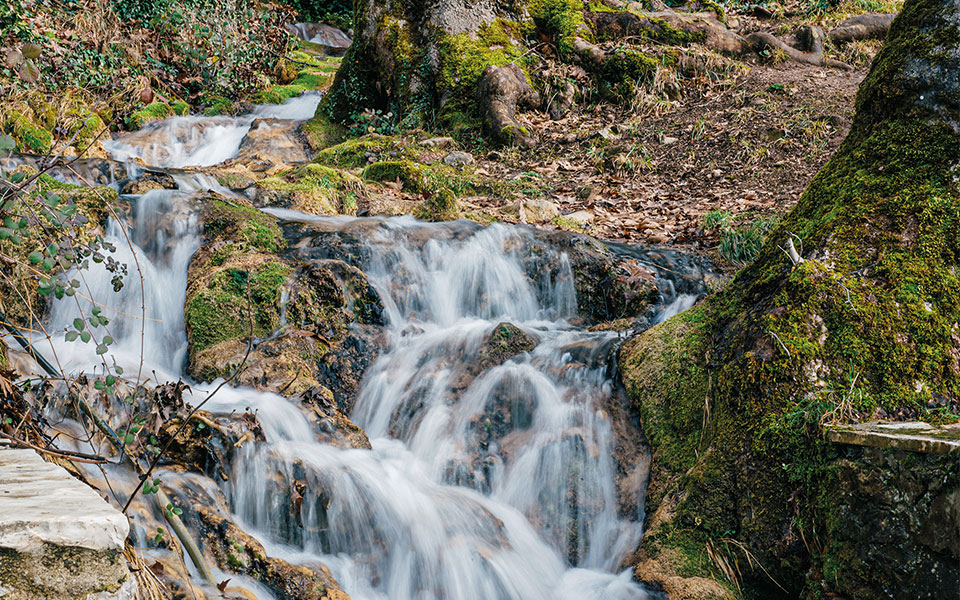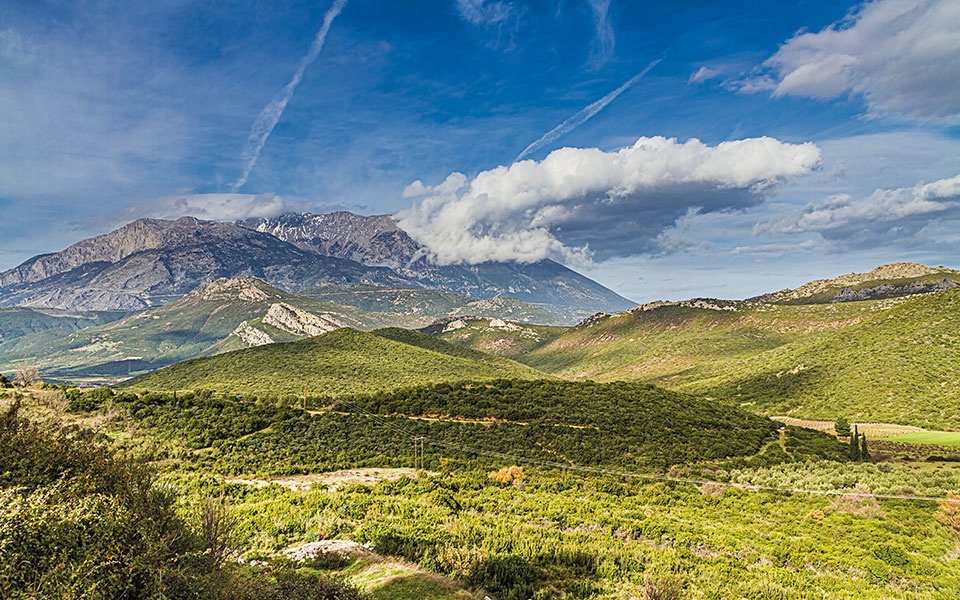During the Ottoman Empire, “Roumeli” – “the Land of the Romans” – was a term used to describe the administrative area identified with the Greek Epirote region in the southern part of the Balkan Peninsula. Today, the term refers to the prefectures of Viotia, Fthiotida, Fokida and Aitoloakarnania. In the minds of most Greeks, Easter in Roumeli means the spits of Amfikleia, the roasted meats of Amfissa and the lambs and goats of Lidoriki, Livadeia and Lamia. Here, the most important custom culminates in the roasting of lambs and other delicacies on Easter Sunday, although preparations begin days earlier, when pits are dug in yards or other open areas.
Vine twigs are used to kindle the charcoal fires over which the lambs and goats are roasted. In keeping with local custom, families and even entire neighborhoods get together, line up their spits side by side, and roast whole lambs and other classic Greek spit-roasted delights – such as kokoresti (lamb offal wrapped in lamb intestines), gardoubaki (a smaller version of kokoretsi with lamb spleen and intestines) or kontosouvli (large chunks of marinated pork). The lambs and other delicacies are cooked for hours, and visits to neighboring fire pits for conversation, drinks and a quick nibble are more common in Roumeli than in other regions.

© Visualhellas.gr
A particularly interesting custom, called “The Tears of the Virgin Mary,” takes place in Amfissa on the afternoon of Good Friday. From the time the early church service ends and until the evening when the procession of the Epitaphios, or funerary bier of Christ, begins, local residents fill the local coffeehouses and ouzeris to enjoy Lenten delicacies and tsipouro or ouzo, the drops of which are said to represent the tears that the Virgin Mary wept at Jesus’ Crucifixion.
On Easter Sunday, at the Church of Aghios Nikolaos in the village of Ypati, the service known as the Vespers of Love is followed by the burning of an effigy of Judas; the Dance of Love and special songs and other religious observances are also performed.

© Getty Images/Ideal Image

© Angelos Giotopoulos
What to see
From Mt Parnasos and Mt Giona to the Vardousia mountain range and Mt Oeta, the mountains of Roumeli are the jewels of the area. A number of the lesser-known villages in the Vardousia mountain range (such as Agrotina, Pentagioi and Krokyleio) are worth visiting, as is the Mornos dam, and the village of Athansios Diakos makes a good lunch stop. Mt Oeta boasts a number of beautiful trails, none more so than the one traversing what’s known as an “aesthetic forest,” or area of great natural beauty, outside the village of Pavliani, where you’ll find many tavernas.
In the area of Mt Parnassos, the village of Vargiani is well worth a visit. Located at an elevation of 900 meters, the village has been declared a settlement of cultural significance and is notable for its architectural beauty. The village is flush with streams that run under sycamore trees – the water is actually melted snow from Mt Parnassos. Driving towards the town of Amfissa, you’ll find the Vagonetto – Fokida Mining Park (at the 51st km of the Lamia – Amfissa National Road, Tel. (+30) 22650.788.19, open daily 09:00-17:00, general entrance €12). The tour gives visitors a step-by-step introduction to the bauxite mining process and also includes a wagon ride in an old tunnel 200 meters below the surface of the earth. In Amfissa, don’t pass up the chance to enjoy a coffee at the historic café “Megalo Kafeneio 1929” (Kechagia Square, Amfissa, Tel. (+30) 694.824.5729), which has been designated a Heritage Site and has, on occasion, hosted theatrical performances by touring companies.












